Pudu’s Restoran Yap Hup Kee still serves some of the best Hakka-style 'yong tau fu' and a unique curry 'chee cheong fun'
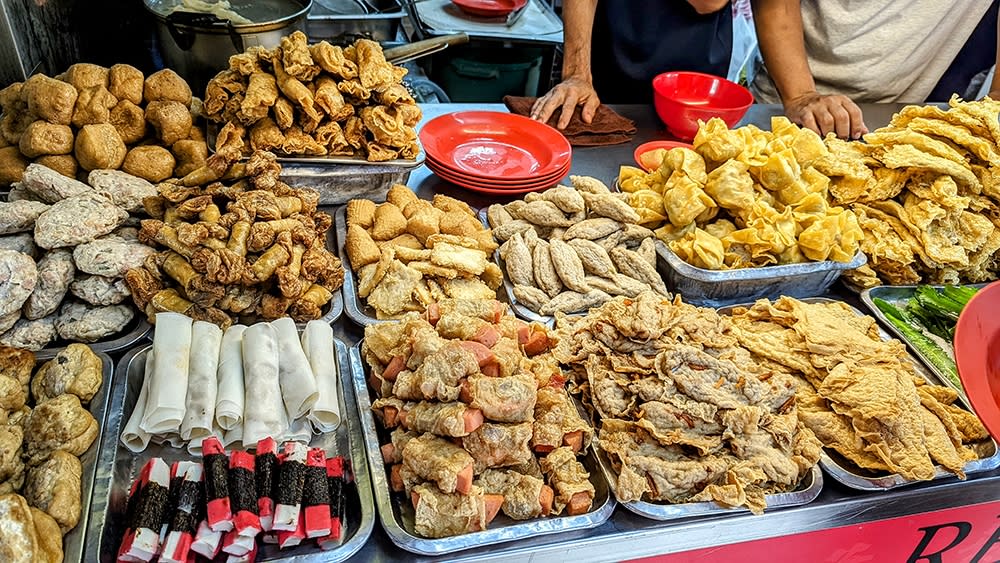
KUALA LUMPUR, Aug 11 – Deep in the maze of inner roads and old shophouses of Pudu are some of the city’s oldest eateries, seemingly holding out against the ever-increasing drone of soulless shopping malls nearby.
One such establishment is Restoran Yap Hup Kee, where a smorgasbord of Hakka yong tau fu ranging from the traditional (tofu and peppers stuffed with fish paste) to the unconventional (seaweed-wrapped surimi, luncheon meat wrapped in fried beancurd skin) can be found.
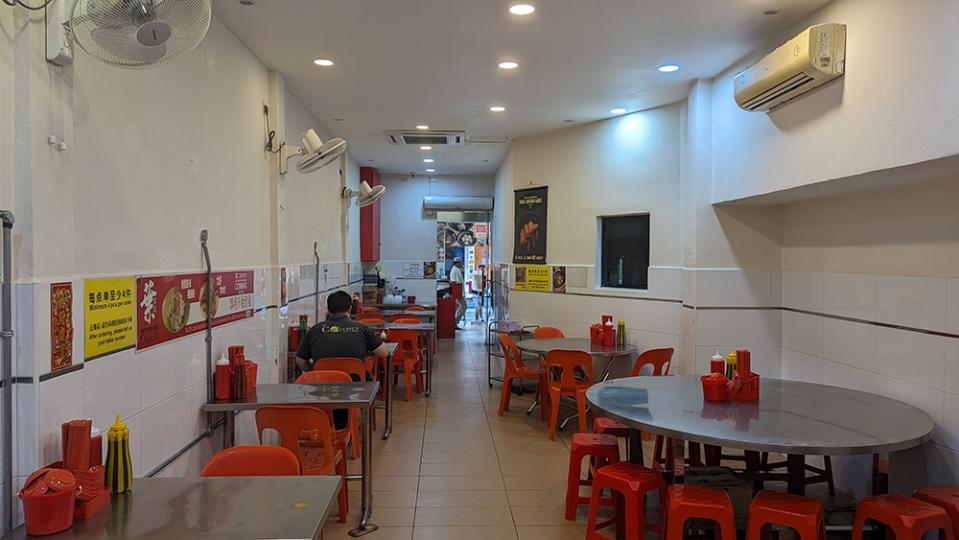
The rather narrow interior doesn’t sit many, so you’d best get here early.
Over the years, they’ve developed a reputation for more than their yong tau fu: Their version of KL-style chee cheong fun has garnered quite the following, with the curry version proving popular among regulars.
Small bowls of thin, silky rice noodles dressed in either a sweet black sauce or a mild curry go for RM4.50 each.
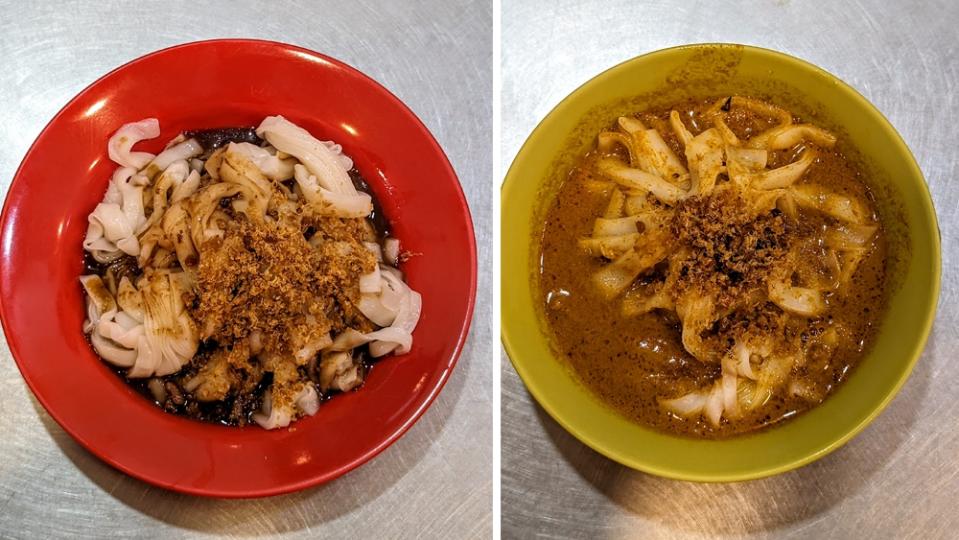
A humble plate of KL-style sweet sauce ('tim jiong') 'chee cheong fun' topped with 'har mai' (left). The star of the show for me, the curry 'chee cheong fun' with the perfect pairing of 'har mai' (right).
The topping of crunchy dried shrimp, or har mai, is a nice savoury touch that doubles as textural contrast as opposed to the usual inclusion of sesame seeds.
Having tried both, I admit to being partial to the curry version, as the subdued flavour and soupy nature of the broth really set the stage for the crispy and salty har mai to shine.
It’s a small portion, and on the right day, two to three bowls would be light – and delicious – work for anyone.
There are about two approaches to ordering the yong tau fu: One with reckless abandon, culminating in a wild flurry of tongs and overflowing plates, and the second involving the best kind of choice paralysis, resulting in an internal monologue of, "Do I want three or four pieces of stuffed tofu? Oh, that other fried thing looks gnarly! I want six.”
When our order arrived, it was hard not to feel that we might’ve gone a little overboard with the fried stuff.
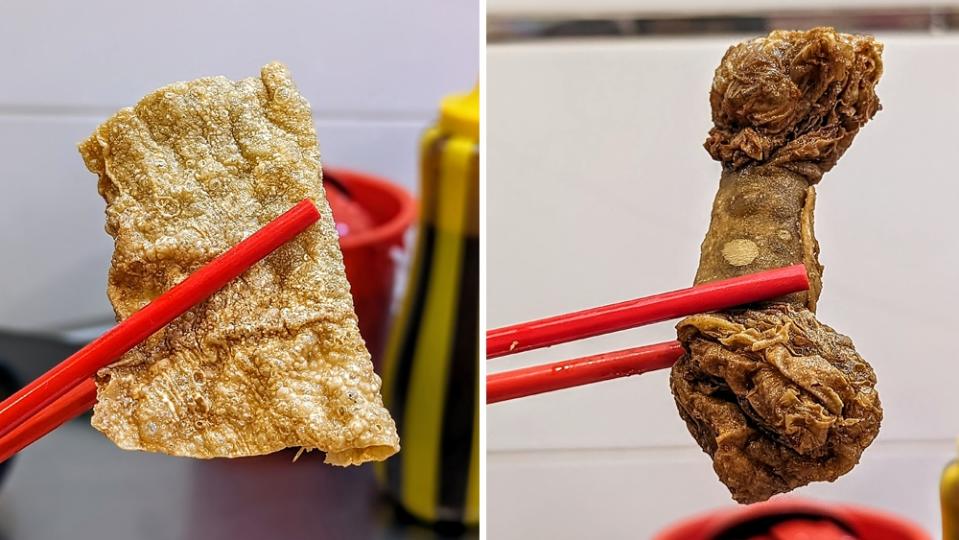
Fried beancurd ('fu chuk') skin (left). My favourite variety here, which I can’t find elsewhere (right).
A gargantuan plate of fried stuffed tofu pok, beancurd skin, dumpling and my personal favourite, an intriguing stick made of multiple layers of beancurd skin at both ends (RM2 per piece).
Save for my favourite, which I have yet to find elsewhere, the rest look mostly indistinguishable from any other yong tau fu, but it’s the little flourishes that make all the difference here.
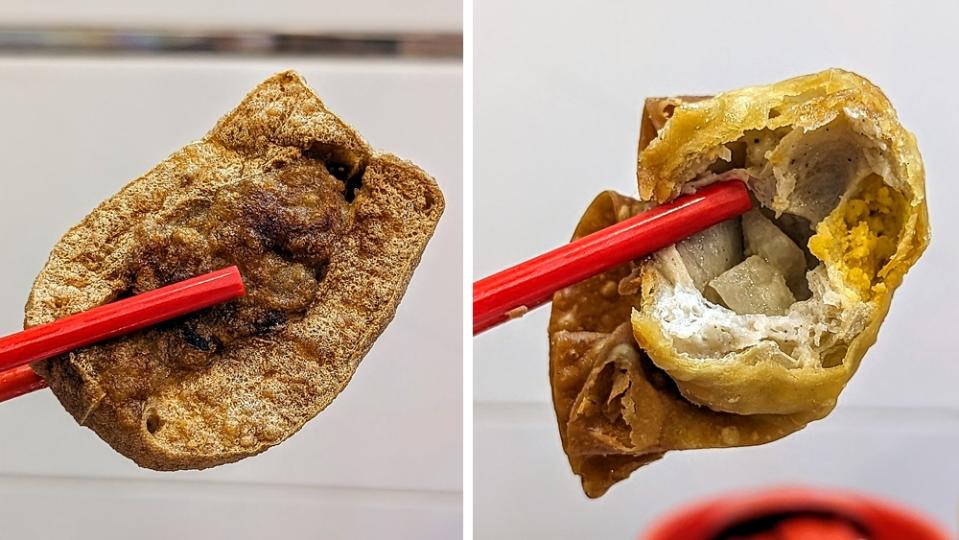
The stuffed 'tofu pok' is filled with a mixture of minced pork and salted fish (left). Jícama and salted egg feature in the fried dumpling (right).
In the stuffed tofu pok, the usual filling of minced pork gets some salted fish thrown in, and in the fried dumplings, large chunks of jícama can be found, along with a little dollop of salted egg for good measure.
Wash it all down with a bowl of prawn dumplings in soup (RM18 for 5 pieces), where once again a little goes a long way.
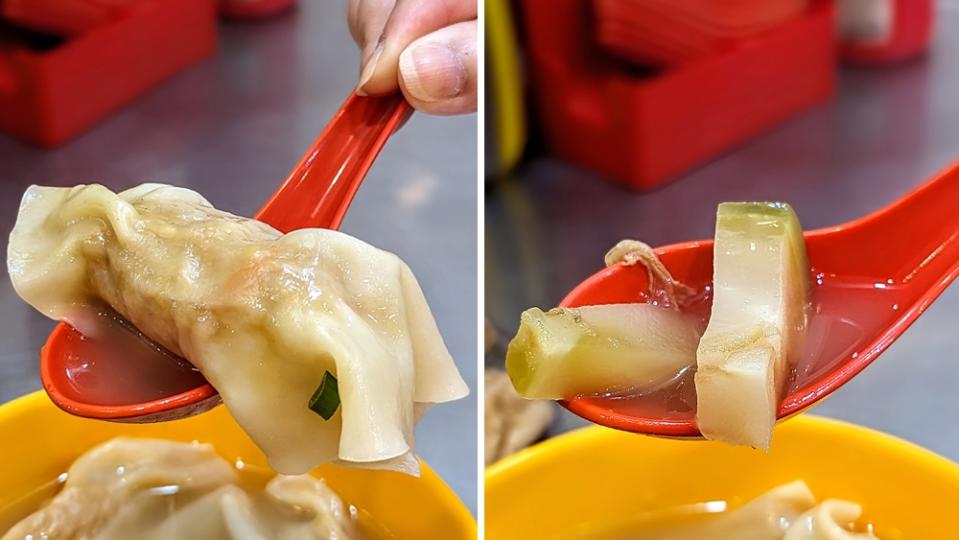
The 'sui kow' or prawn dumpling here contains a whole prawn (left). The 'zha cai' is a nice and tasty touch that is rare to find in soups in most places nowadays (right).
Each sui kow or dumpling contains a whole prawn, and the soup owes a lot of its flavour to the presence of zha cai, a type of pickled vegetable that brings salty and sour notes to the broth.
There is a second location in Kuchai Lama named Yap Hup Kee Palace, where you can find the same food served in a more done-up setting, but I’m still partial to the certain quality, je ne sais quoi if you will, of eating at this old spot in Pudu.
Restoran Yap Hup Kee
45, Jalan Brunei Barat, Pudu, Kuala Lumpur
Open daily, 9am-5pm, 5:30pm-11pm
Tel: 03-2148 9220
* Follow us on Instagram @eatdrinkmm for more food gems.



